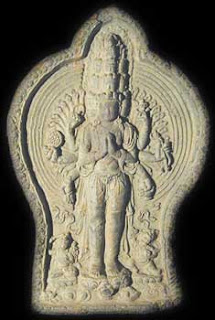
√
Warning: This old blog is full of links leading nowhere, so to avoid confusion and possible disappointment, the only link you need is this one. To read about the more recently released version of TPNI, look here.
For nearly 30 years I’ve been collecting references to Tibetan personal and place names from all kinds of sources, but mostly from works in Tibetan language. Even the couple of devoted Tibeto-Logic readers that have stayed with me all this time may not be aware of the fact, but one of the primary reasons I started this blog five years ago was to create a platform for the distribution of the reference works I’ve been working on. There were obstacles to overcome, not least of all the limitations of the blog format, which forced me to open a webpage called Tibetological (later replaced by New Tibetological). Most of the larger ones, like Tibskrit and Tibschol, and TibHist, too, have already been posted at Tibetological website (or uploaded to a download site and then linked at Tibetological). TibVocab has been made part of the 'translation tool' at THlib.*
(*Even after all these years THlib hasn’t managed to put up the bibliographical references, which I believe to be absolutely essential for what is after all largely a citation dictionary. The absence of the key also means that many of the entries are only semi-intelligible. Although there is a dedicated bibliography for TibVocab that I could easily make available to anyone who wants it, many of the same abbreviated references used there are also used in PropNames.)
My vanity usually forbids me from admitting to selfish motivations, unless cornered, but in this case I can say that one motive is clear, which is to preserve for the future a body of data that might otherwise be in danger of getting lost. That would be work wasted... *my* work. But seriously, this isn’t the kind of reference work that will be easily consulted by a great number of people. So there is no good reason to worry about it, is there? Vanity-wise, I mean.
You will know if you can benefit from it or not. If you not only studied a little Tibetan in the past and know how to look up words in a Tibetan dictionary, but also developed some talent for converting Wylie transcription to Tibetan script in your mind, you’re already ready to make serious use of “PropNames” as I call it for short. If not, I would advise you to wait.
It is taking me a lot of time, time I don’t really have, to fix up the pages and make them presentable, and double-check things where it seems necessary. So even if I’d like to say that the 100 pages of the first fascicle will quickly be followed by a second 100, other matters are pressing for my attention. I haven’t even been able to complete the first letter of the alphabet. So I put this up mainly as an encouragement to myself, to keep working on it.
If you are ready to go there, the first 100 pages of PropNames are here.
The bibliographical key, which PropNames simply cannot do without, is here.
(Note! Sorry, but both these links moved in 2014 to Tiblical website. Try here and here!!)
I'm sure I’ll hear some complaints about it, but I don’t mind. I’ve found it very useful as a research tool over the years, and I’m confident the Tibetologists for whom it is intended, particularly younger and more energetic researchers, will find it useful as well. Well, yes, that means when the full 1,600-page work is finally made available, as it will be, I promise. You can hold me to it.
 |
| Bietala (1683) |
PS: I’m sorry, as A.W. pointed out to me, that until today I only supplied links to the "html" at Tibetological, where the Word files overloaded my storage limits, as a flashing sign so kindly informed me. (This being a free account, how can I complain?) Well, for Part One you may go to Megaupload here. For the bibliographical key, try here.* I try my best to keep these links to upload sites up-to-date here, at a page of Tibetological website. But I understand there are limits to the number of downloads permitted during a certain period of time, as well as limits on the time the file will be kept there if nobody has bothered to download it. If you do not succeed in downloading a file, put it off for another day. If it still doesn’t work for you, I will be glad to do what I can do about it, which probably isn’t very much.
(*January, 2012: As you may know, Megaupload was taken down from the web. Along with it went all my download links. At the moment, only the HTML versions of the PropNames files are available.)
As of February 23, 2012, I have placed at the update page linked above, new download links for the first part of TibProp (now covering about 1/7th of the whole work) together with a revised and enlarged bibliographic key that is absolutely necessary to make use of it. (No PDF versions have been posted as of yet, and I am not even sure if anyone would want or prefer them.)
For a direct link to the first fascicle now in "Tiblical" website, working as of May 1, 2014, try HERE.
As of 2024 so much of what is mentioned and linked in this blog has changed I’m thinking I should just remove it. Still thinking. Right now Tibetan Proper Names Index or TPNI can be found in its complete form here:
•


















